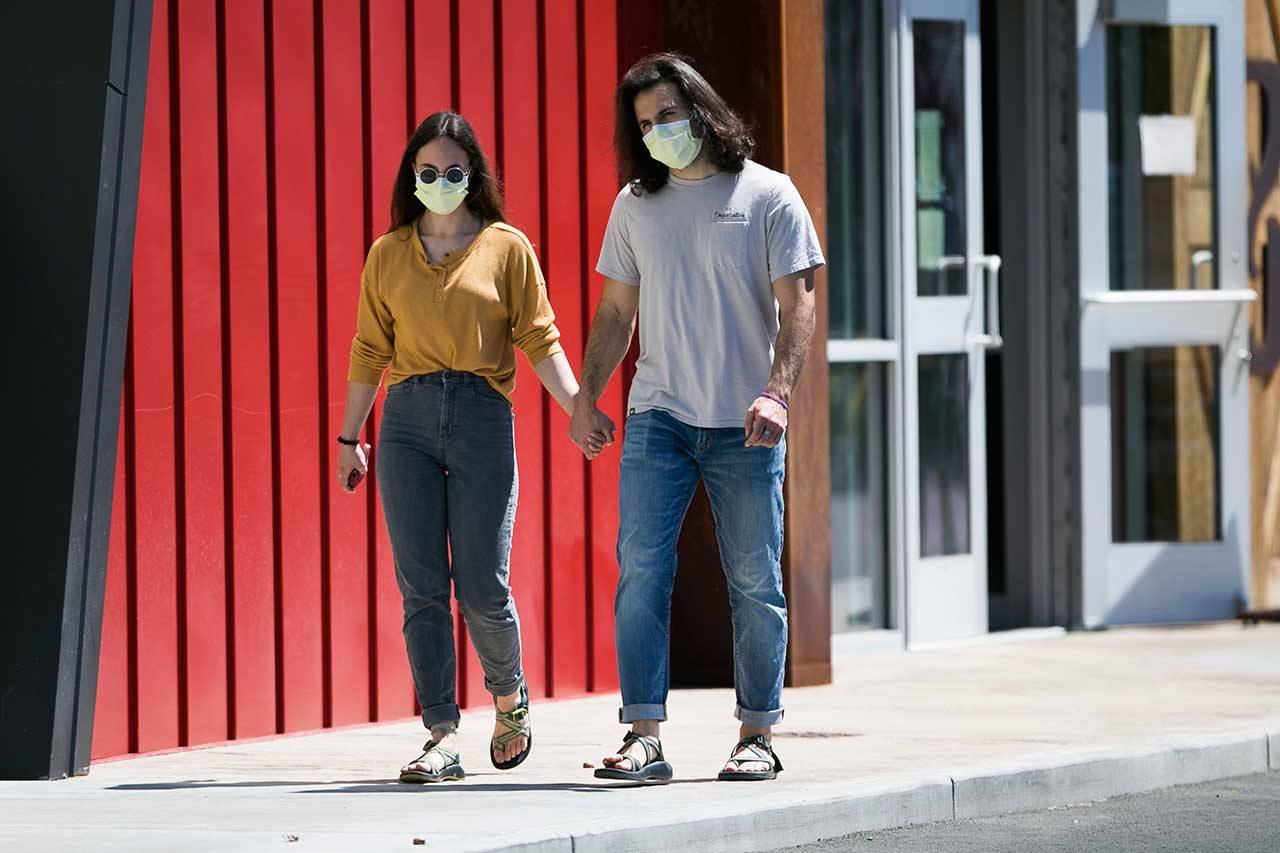OLYMPIA — Washington state will require people to wear facial coverings in public settings under a statewide public health order announced Tuesday by Gov. Jay Inslee in response to ongoing COVID-related health concerns.
The order, issued by Secretary of Health John Wiesman, takes effect Friday. The order requires face coverings when people are indoors in a public area, and outdoors in a public area when 6 feet of physical distancing can’t be maintained.
Washington joins several other states that already have statewide mask orders in place, including California, which issued one last week.
Yakima County, which has been among the areas hardest hit by the outbreak, has even more stringent requirements under a separate proclamation issued by Inslee that also takes effect Friday. In addition to being covered by the statewide mandate on masks in public, there will now be a legal requirement that prohibits people from entering a place of business — either indoors or outdoors — without first donning a mask.
Under that same proclamation, businesses in the central Washington county are prohibited from allowing a customer to enter a business, or conduct business with a customer in any public space, unless the customer is wearing a face covering.
There are exemptions for children younger than 2 and for people who are deaf or have hearing loss. Facial coverings for children between the ages of 3 and 5 are strongly recommended but not required under the orders.
People engaged in recreation alone or with household members and those eating out at restaurants wouldn’t have to wear masks as long as they are properly distanced from others.
The statewide order builds on a previous one from Inslee, that — since June 8 — has required workers to wear facial coverings unless they don’t interact with others on the job.
Last month, San Juan County became the first jurisdiction to impose a mask requirement that was enforceable by law, making it a misdemeanor for people to not wear a mask while in public.
Brendan Cowan, a spokesman for the county, said in an email Tuesday that, to date, no citations have been issued, just “lots of education and outreach.”
Several other jurisdictions — including Jefferson, Clallam, King and Thurston counties — have issued their own face covering directives or have strongly urged residents to wear masks, although those counties have said the efforts were focused more on education and that there were no civil or criminal penalties for violators.
A spokesman for Inslee said violation of the statewide mask order is a misdemeanor, punishable by up to 90 days in jail and up to a $1,000 fine.
Violation of the Yakima County proclamation is a gross misdemeanor punishable by up to 364 days in jail and up to a $5,000 fine.
The move comes as Washington’s 39 counties are moving through a four-stage reopening plan.
As of Tuesday, 16 counties are in Phase 3, which allows group gatherings of up to 50 people, including sports activities, and allows restaurants to increase capacity to 75 percent. Gyms and movie theaters can reopen at half capacity during the phase.
Eighteen counties are currently in Phase 2, which allows restaurants and taverns to reopen at half capacity with limited table sizes, hair and nail salons and barbershops to resume business, and retail stores to reopen for in-store purchases at 30 percent capacity. It also allows additional outdoor recreation and gatherings with no more than five people outside of a person’s household.
Three counties — Benton, Franklin and Yakima — remain in Phase 1, which only allows essential businesses to be open and limits restaurant service to takeout and delivery, and it allows limited outdoor recreation.
Two other counties — Chelan and Douglas — are in a modified Phase 1 of reopening that allows some additional business activity.
More than 28,800 people in Washington state have tested positive for the virus and at least 1,276 have died.
The virus causes mild to moderate symptoms in most patients, and the vast majority recover. But it is highly contagious and can cause severe illness and death in some patients, particularly the elderly and those with underlying health conditions.

